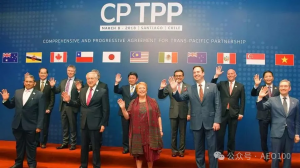The full name of CPTPP is:Comprehensive and Progressive Agreement for Trans-Pacific Partnership.
Joining high-level economic and trade agreements is a topic that many people are studying at present, and import and export enterprises should also properly understand the impact of CPTPP. As the WTO has been basically difficult to play a corresponding role, many regional trade agreements or organizations came into being. In fact, our country has been preparing and optimizing the internal mechanism and actively preparing to apply for membership. This matter is very urgent in the international trade business, come and look at this document!
The CPTPP is a multilateral free trade agreement signed in 2018 by 11 countries: Japan, Canada, Australia, Chile, New Zealand, Singapore, Brunei, Malaysia, Vietnam, Mexico and Peru.
CPTPP highlights
1. High-standard market access: The CPTPP sets high-standard market access rules in the areas of trade in goods, trade in services, investment, intellectual property rights, etc., providing member countries with broader market opportunities.
2. Trade facilitation: The Agreement aims to simplify customs procedures, improve customs clearance efficiency, reduce trade costs, and facilitate trade flows among member states.
3. Strengthen intellectual property protection: The CPTPP sets high standards in intellectual property protection, which will help stimulate innovation and promote scientific and technological progress and industrial upgrading.
4. Promoting regional economic integration: By strengthening economic ties and cooperation among member countries, the CPTPP will help promote the process of regional economic integration and enhance the overall competitiveness of the regional economy.
The impact of CPTPP
The entry into force of the CPTPP has had a profound impact on the global trade pattern. First of all, it provides member countries with broader market opportunities and helps to promote trade and economic cooperation among member countries. Secondly, the high-standard rules of the CPTPP will help promote the process of global trade and investment liberalization and facilitation, and inject new impetus into global economic recovery and development. Finally, the entry into force of the CPTPP has also aroused the attention of other countries and regions, promoting the negotiation and signing of more free trade agreements.
China and the CPTPP
Although China has not yet joined the CPTPP, it has been actively participating in the construction and improvement of the global trading system. China expressed its willingness to cooperate with CPTPP members and explore the possibility of joining. At the same time, China has made remarkable progress in promoting the construction of pilot free trade zones, strengthening intellectual property rights protection and promoting trade facilitation.
In the field of trade, it is close to 99% zero tariff, and in the field of service trade and investment, all adopt the negative list management model, which is considered to be the most demanding economic and trade cooperation mechanism so far. The application to join the CPTPP is China’s positive response to trade protectionism and decoupling, which is more conducive to promoting international cooperation in production and trade and making greater contributions to economic globalization.
As early as 2021, China formally applied to join the Comprehensive and Progressive Agreement for Trans-Pacific Partnership (CPTPP), which is a more important step to participate in the global multilateral economic and trade governance process after the signing of the Regional Comprehensive Economic Partnership (RCEP), which means that China will be more proactive and more determined to change the rules as the entry point. We will build a more systematic and strategic institutional opening up system. According to the Peterson Institute in the United States, the CPTPP could bring about $147 billion in benefits to the world every year.
If China joins, not only will China gain $298 billion in benefits, but CPTPP’s benefits will quadruple to more than $630 billion, which is a win-win situation.
Joining the CPTPP will play a huge role in promoting China’s high-quality development and high-level opening-up. In terms of depth and breadth, the CPTPP agreement is richer and more comprehensive than RCEP, and it is a comprehensive free trade agreement with high standards, known as “a high-standard trade agreement for the 21st century”, representing the typical characteristics of a new generation of global trade rules, and has begun to reshape the Asia-Pacific and even the global trade pattern. The agreement covers not only traditional issues such as trade in goods, rules of origin, trade remedies, technical barriers to trade, but also a large number of new issues, such as trade in services, TRIPS (Agreement on Intellectual Property Rights), competitive neutrality, e-commerce, government procurement, state-owned enterprises and designated monopolies, small and medium-sized enterprises, transparency, etc. And investor-State Dispute settlement (ISDS). It can be said that CPTPP provides international reference coordinates and framework for China’s next reform, and provides an opportunity for China to promote the improvement of domestic laws, regulations and rules in both breadth and depth. The internalization of external rules has always been a familiar road for China, and I believe this time will be no exception.
Post time: Dec-07-2024

